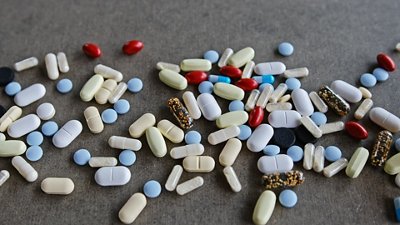Fundamentals of Antimicrobial Stewardship in Veterinary Medicine
By the bioMérieux Editors | Reading time: 2 min
PUBLICATION DATE: MAY 07, 2024
Antimicrobials are critical tools for preventing and fighting disease in humans and animals. However, increasing reports of antimicrobial resistance and drug-resistant bacteria threaten their efficacy in treating diseases for all living species.
Antimicrobial resistance (AMR) is a One Health issue affecting humans, animals, and the environment, which requires urgent action across all sectors.
By implementing antimicrobial stewardship practices and programming, veterinarians can aid in the preservation of antibiotic efficacy, promote animal health and welfare, and contribute to a safe food supply.
Principles of Veterinary Antimicrobial Stewardship
Antimicrobials, including antibiotics, are commonly used for companion animals as well as laboratory, food producing, zoo, and aquatic animals in order to prevent, control, and treat disease. If we hope to continue utilizing medically important antimicrobials in veterinary medicine and safeguard their efficacy for future applications, antimicrobial stewardship practices are critical.
The American Veterinary Medical Association (AVMA) defines antimicrobial stewardship for veterinarians as, “…the actions veterinarians take individually and as a profession to preserve the effectiveness and availability of antimicrobial drugs through conscientious oversight and responsible medical decision-making while safeguarding animal, public, and environmental health.”
The University of Melbourne has identified 6 main components to consider when adopting a veterinarian antimicrobial stewardship program in Australia, all of which could be applicable globally.
- Having a champion: A vet or senior nurse within the practice who takes ownership of the program.
- Utilization of guidelines and judicious antimicrobial use: This involves knowledge of antimicrobial guidelines to improve prescribing and reduce antimicrobial use in medical primary care practice.
- Implement a traffic light system: This involves color-coding antimicrobials in the clinic pharmacy by their importance rating.
- Diagnostic testing: Increased diagnostic testing to allow for discernment between cases with a bacterial origin and those that do not.
- Delayed prescribing: Typically gives patients a 2-day delay on a prescription, so if symptoms persist or worsen, then antimicrobials can be obtained.
- Local guidelines: Knowledge of local usage guidelines.
Diagnostics Can Support Veterinary Antimicrobial Stewardship Initiatives
As outlined above by the University of Melbourne’s Australian Veterinary Prescribing Guidelines, the utilization of diagnostics can play a critical role in supporting the judicious use of antimicrobials. Diagnostic tests can help to accurately identify the causative pathogen to guide appropriate antibiotic treatment or determine whether an antibiotic is needed at all. Accurately identifying when to use an antibiotic and what type of antibiotic helps to limit overuse, a key contributor to the emergence and spread of antimicrobial resistant pathogens.
Diagnostics can also aid in de-escalation, which “involves switching from drugs with a high-importance rating to those with a low or medium-importance rating if susceptibility testing indicates their effectiveness, or shifting from broad-spectrum to narrow spectrum therapy once the causative agent has been identified.”
Impact of Veterinary Stewardship Programs
A study published in NCBI measuring the impact of veterinary antimicrobial stewardship programs concludes that, “AMS interventions had a positive impact in a large group of general veterinary practices, resulting in a decline in overall antimicrobial use,” justifying the vital importance of consistent implementation and support to aid AMS initiatives.
Antimicrobial-resistant organisms can spread between people and animals and can be passed through animal-based foods. Although a considerable amount of antimicrobial resistance and stewardship conversations center around human-based applications, veterinary medicine has an important role in combating antimicrobial resistance.
Antimicrobial resistance affects all living beings, and with large quantities of antibiotics being used for food-producing livestock animals, veterinarians are in a unique position to make a definitive impact on antimicrobial use through the adoption of stewardship practices and by limiting use of medically important antimicrobial drugs.
YOU MAY BE INTERESTED IN THESE ARTICLES
SHARE THIS ARTICLE:
- AMR AMS


%20copie?qlt=85&ts=1712666912213&dpr=off)


